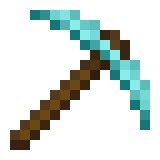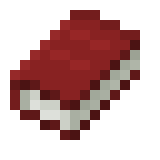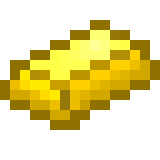Reviewer: John BDeveloper: HopfrogPublisher: Humble BundleCategory: Adventure, Simulation, Strategy, Puzzle
Release Date: 7.30.2019 (Digital) / 10.29.2019 (Physical)Price: $19.99 (Digital) / $29.99 (Physical)
Buy Forager digitally from the Nintendo Switch eShop here.
Buy Forager physically from Amazon here.
I hate RPGs that are more grind than game; it’s so mind-numbingly boring to do random encounter after random encounter to progress just a little bit at a time to be powerful enough to move the story another inch forward. Why, then, do I love Forager for the Nintendo Switch so dang much? It’s an action adventure game that is 99% item grinding, 1% crafting, and 0% story. I can’t quite put my finger on what about its simple gameplay loop is so dangerously addictive, and it scares me just a little. When I first popped the cart in, I thought I would try it out for an hour and then go to bed – that was around 10:30. I turned it off and went to bed around 6:30 in the morning. I still don’t know how I managed to put it down long enough to write about it.

Fight and Forage
Forager sees players taking the role of a cute little cartoon forager with no real name or backstory; there’s not really any kind of story to the game, actually. The forager kind of reminds of the main characters from the graphic novel series Bone, however, and that’s good enough for me. You start on an island with nothing but a pickaxe. You use the pickaxe to chop down trees and crack open rocks for simple resources like wood, fruit, metal, and stone, which you can then craft into buildings that can further refine the resources you collect into higher quality ingredients, which can be used to craft even higher quality items. So, basically, it works like any crafting game ever.
Combat works like any 2D Legend of Zelda except Adventure of Link. You see the action from a birds-eye perspective. Animals and monsters spawn randomly, and you can attack them with your pickaxe to being with, though eventually you get a sword and a bow to use as well. The sword has a wider, longer attack arc, so it was my favorite weapon to use. The bow can be aimed using the right thumb stick, sort of like a twin-stick shooter, but I didn’t really like using the bow. Aiming it was a little too finicky, and the sword just worked faster and better. You can’t defend, but you can dodge using the right stick, assuming you don’t have the bow drawn.

Puzzles and Quests
As you expand your explorable area (more on that in a sec), you’ll come across some environmental puzzles and NPCs offering quests. The quests are all fetch or kill quests – you just have to find the right item and return it to the quest giver or destroy a certain enemy or object. They’re simple, but they usually have useful rewards like unique items that bestow passive buffs or an orb that you can use to increase one of your stats. Puzzles are a little more varied and actually pretty fun. They range from fairly simple – for instance, just light every torch on an island – to pretty darn hard. Puzzles and quests have similar rewards, except puzzles are a lot more fun to complete.

Figure Things Out For Yourself
With the exception of being encouraged to build a forge when the game begins, Forager doesn’t really do tutorials. You need to figure out what to gather – and sometimes how to gather it – on your own. The easiest way to do it that I found was to work backwards. For instance, in order to make pizza I needed cheese. In order to make cheese, I first needed milk. There were cows around, but walking up to them didn’t really offer any options to interact with them aside from just attacking. The icon for milk looked like it as similar to the icon for an empty glass bottle, so I made some bottles and found a cow, which then unlocked the interaction button which allowed me to collect milk in the bottles. It’s quite an accomplishment to be able to make a game that doesn’t teach players how to play, but gives them all the tools they will need to teach themselves.

Explore Your World – And Yourself
If you ever hit a wall when trying to find a component, chances are you just haven’t unlocked the right elements yet. There are two ways to discover new resources or craftable items – by purchasing new islands or by leveling up. Islands are fairly straightforward to purchase – just get enough gold, go to the buy menu, and select the island you’d like to explore. There are a few different biomes to explore, like the basic forest, icy tundra, arid deserts, spooky graveyards, and demonic crags. Each biome has a different collection of flora and fauna to harvest, so if you’re looking for a new resource you’ll need to buy a new island or two to find it.
Leveling up happens when you gain enough experience to do so – I know, it’s a revolutionary idea. You gain experience by fighting monsters and collecting raw materials – though there are some temporary abilities that allow you to gain experience for crafting, as well. Every time you level up you get one point to spend on a new ability tile. These tiles can unlock new passive abilities or advance your tech tree, allowing you to build new structures or craft new items. The biggest problem with this setup is if you’ve hit a roadblock in multiple tech lines, you can only unlock one new avenue at a time so you have to go back and grind some more for another level so you can unlock another branch on the tech tree. It should get tedious – it really should. But why doesn’t it?

Zen and the Art of Foraging
I think not having a story is what makes the emphasis on grinding work so well. When you’re playing through a game to experience an engaging story, long grinding elements between cutscenes can take on the role of a nuisance more than a challenge. In Forager, the grinding is the whole point; it’s not interrupting anything, and so it does not feel like an unnecessary burden. You can lose yourself in the flow of the gameplay completely, growing accustomed to round after round of harvest, refine, craft, repeat as many times as necessary – or even more than that. Forager is one of those games where you’ll tell yourself “OK, I’ll just gather enough to build this one more thing and then I’ll turn it off.” But then you’ll still be telling yourself that after the next ten things you craft.

Hand Crafted Pixels
Forager joins a growing number of indie games taking full advantage of the visual power of the pixel. The graphics look like they would be right at home on the SNES, but the smoothness of the animation lets you know that this is unmistakably a modern game. The colorful, cartoony design elements are charming enough to keep your attention, and clear and distinct enough to let you know what you’re looking at. I’ve played a few pixel-based games where many items looked too similar to one another, making it hard to determine if you were looking for or at the right thing. The music is simple as well, with a number of lighthearted tunes to accompany the forager’s work and some more somber or tense songs for battle or puzzle situations. If I had to pick one weak spot in the game, the music is the closest I could get; it’s not bad, by any means, but in a game full of amazing execution, it’s just the only thing that’s just good instead of outstanding.

Craft a Space on Your Shelf or Digital Library
I just can’t recommend Forager highly enough. The gameplay is tight and addictive, the graphics are bright and engaging, and progression is rewarding even without being tied to a storyline. I’d like for this review’s conclusion to be longer, but I’ve stopped playing long enough. I need to get back to foraging.
Score: 10/10
Buy Forager digitally from the Nintendo Switch eShop here.
Buy Forager physically from Amazon here.
Follow Hopfrog
Website /
Follow Humble Bundle
Website / Facebook / / Instagram
*A game cartridge was provided for review purposes.
Categories
Recent Posts
Tags
#Broforce #dev #DRIVE #FE #indie #indies #Kickstarter #kickstarter #Minit #nindies #Nindies #Nintendo #NintendoSwitch #Owlboy #RaceDieRun #Switch #SwitchCommunity #switchcorps #SwitchCorps #SwitchCorps #Switchiversary #SwitchLewd #SwitchLewds #Switchruary #Twitch #videogames #VitaIsland #YouTube




Leave a Reply